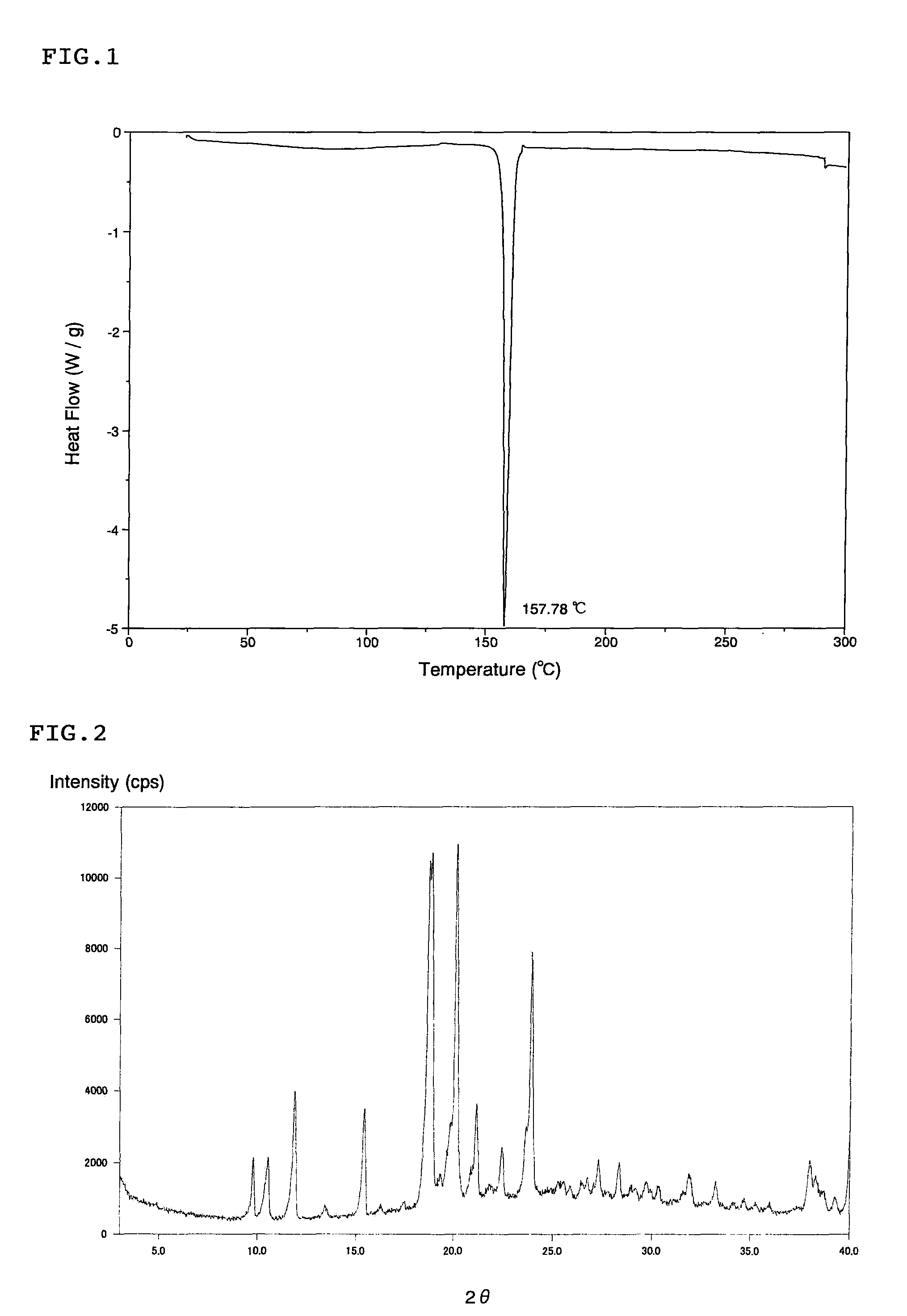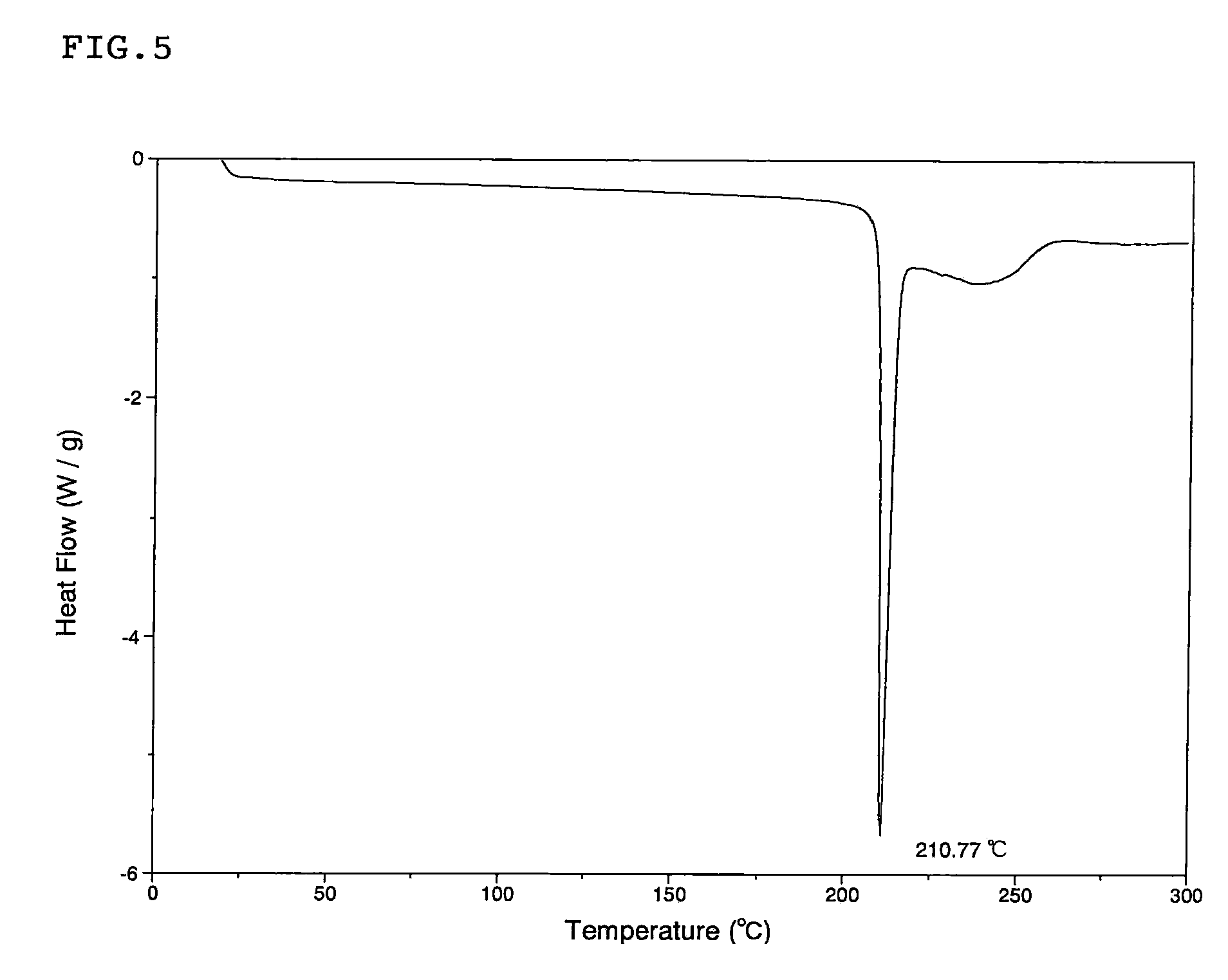Cocrystal of C-glycoside derivative and L-proline
a technology of c-glycoside and crystallization crystal, which is applied in the field of crystallization crystal of c-glycoside derivative and l-proline, can solve the problems of inability to use known compound a of free form, inability to achieve the effect of constant quality and superior storage stability
- Summary
- Abstract
- Description
- Claims
- Application Information
AI Technical Summary
Benefits of technology
Problems solved by technology
Method used
Image
Examples
reference example 1
[0049]Pentamethylbenzene (4.85 g) and a n-heptane solution (16.3 mL) containing 1.0 M of boron trichloride were added to a solution of (1s)-1,5-anhydro-1-[3-(1-benzothien-2-ylmethyl)-4-fluorophenyl]-2,3,4,6-tetra-O-benzyl-D-glucitol (2.5 g) dissolved in dichloromethane (50 mL, cooled to −78° C.) in an argon stream. The mixture was stirred at the same temperature for 2 hours. After the completion of the reaction, methanol (100 mL) was added for decomposition of the excessive reagent, and the solvents were removed by vacuum distillation. The residue was purified by silica gel column chromatography (chloroform-methanol). The obtained residue was suspended in a mixed solvent of ethanol and water and was refluxed with heating to dissolve. The resulting solution was slowly cooled to room temperature for recrystallization. The obtained crystal was collected by filtration and then dried under vacuum and heating to obtain (1S)-1,5-anhydro-1-[3-(1-benzothien-2-ylmethyl)-4-fluorophenyl]-D-gluc...
reference example 2
[0050]The differential scanning calorimetry analysis chart (DSC analysis chart) of L-proline is shown in FIG. 3, and its X-ray powder diffraction chart is shown in FIG. 4.
example 1
[0051]L-proline (570 mg) was added to an ethanol (25 mL) suspension of (1S)-1,5-anhydro-1-[3-(1-benzothien-2-ylmethyl)-4-fluorophenyl]-D-glucitol (known compound A) (2.0 g). The reaction mixture was stirred at 100° C. for 30 minutes. After the reaction mixture was slowly cooled to room temperature, the resulting solid was collected by filtration and washed with ethanol. The obtained solid was dried under vacuum and heating, and the solid was suspended in a mixed solvent of ethanol and water. The suspension was refluxed with heating for dissolution. The resulting solution was slowly cooled and stirred for 1 hour with ice-cooling. The resulting crystal was collected by filtration, washed with ethanol, and dried under vacuum and heating to obtain a cocrystal (the cocrystal of the present invention) (1.7 g) of (1S)-1,5-anhydro-1-[3-(1-benzothien-2-ylmethyl)-4-fluorophenyl]-D-glucitol and L-proline. The differential scanning calorimetry analysis chart (DSC analysis chart) of the obtained...
PUM
| Property | Measurement | Unit |
|---|---|---|
| 2θ | aaaaa | aaaaa |
| 2θ | aaaaa | aaaaa |
| 2θ | aaaaa | aaaaa |
Abstract
Description
Claims
Application Information
 Login to View More
Login to View More - R&D
- Intellectual Property
- Life Sciences
- Materials
- Tech Scout
- Unparalleled Data Quality
- Higher Quality Content
- 60% Fewer Hallucinations
Browse by: Latest US Patents, China's latest patents, Technical Efficacy Thesaurus, Application Domain, Technology Topic, Popular Technical Reports.
© 2025 PatSnap. All rights reserved.Legal|Privacy policy|Modern Slavery Act Transparency Statement|Sitemap|About US| Contact US: help@patsnap.com



